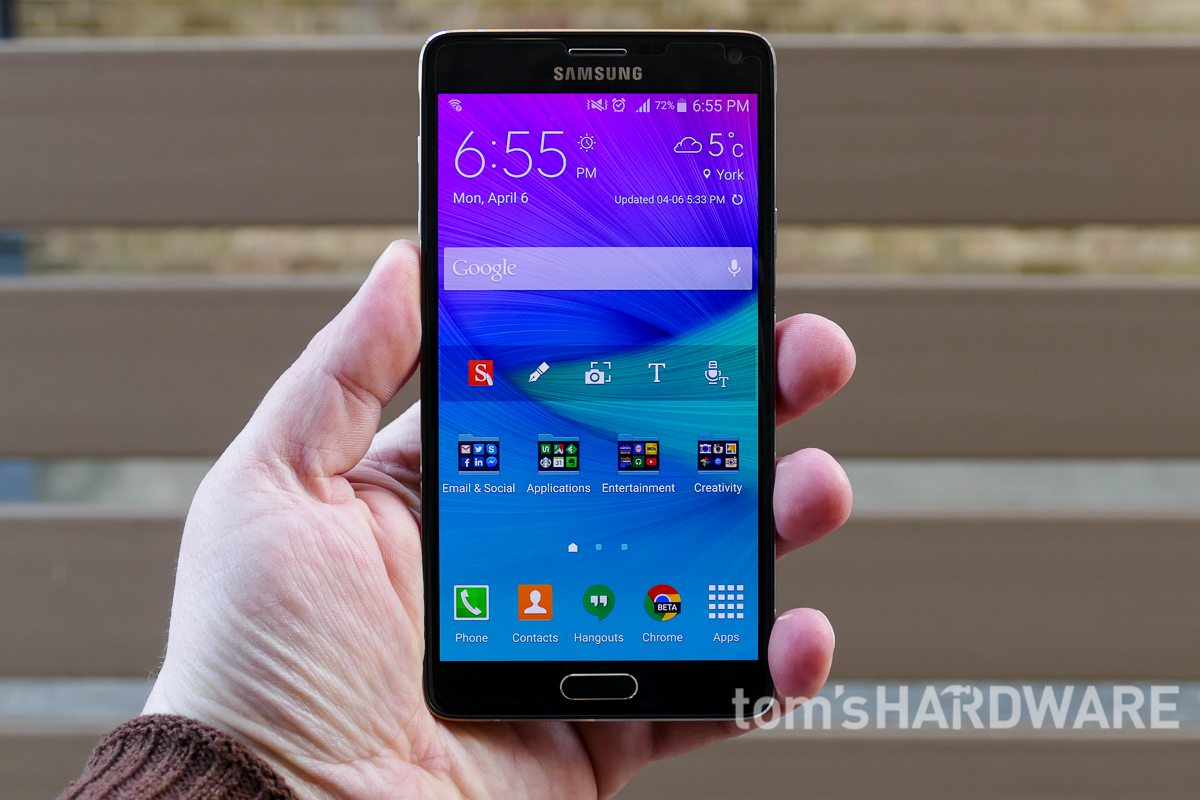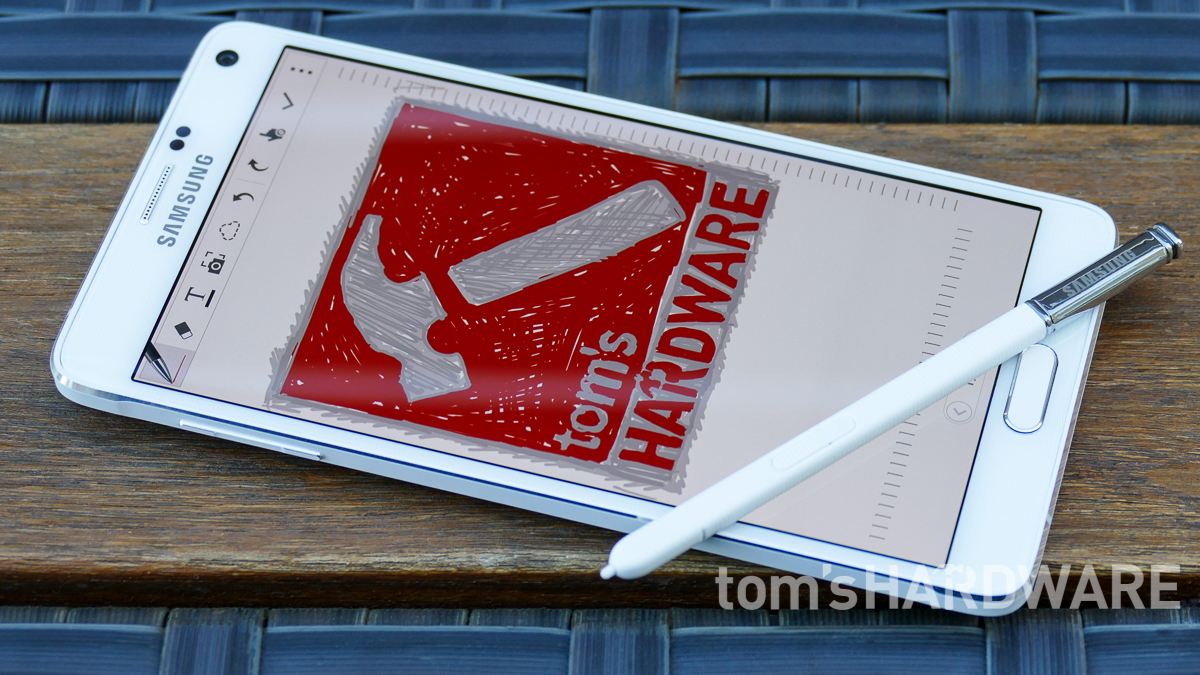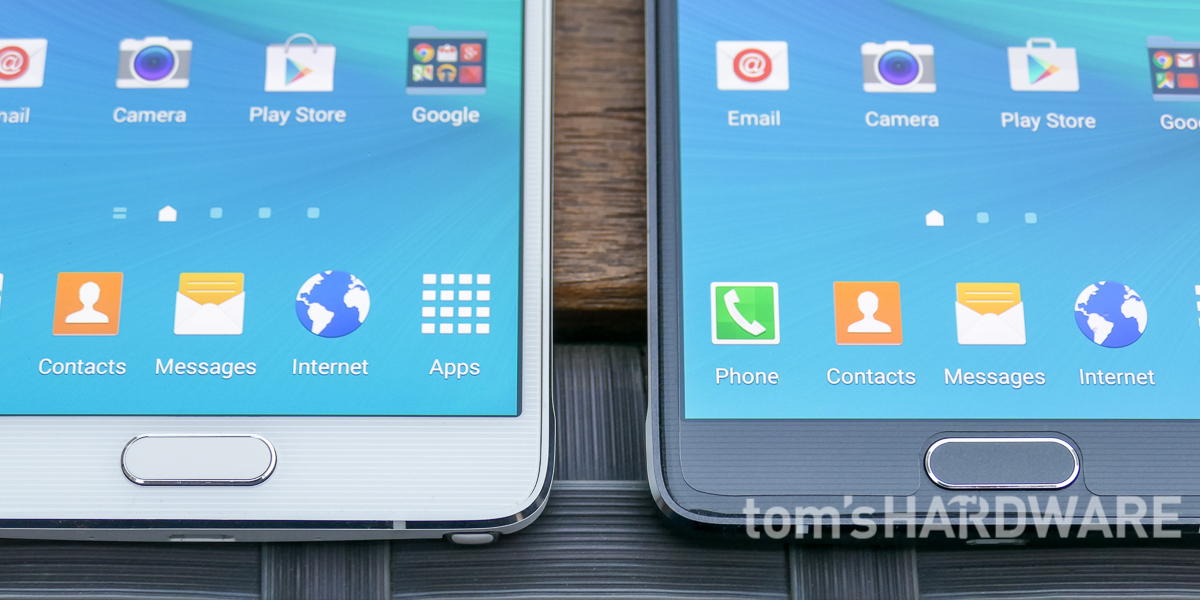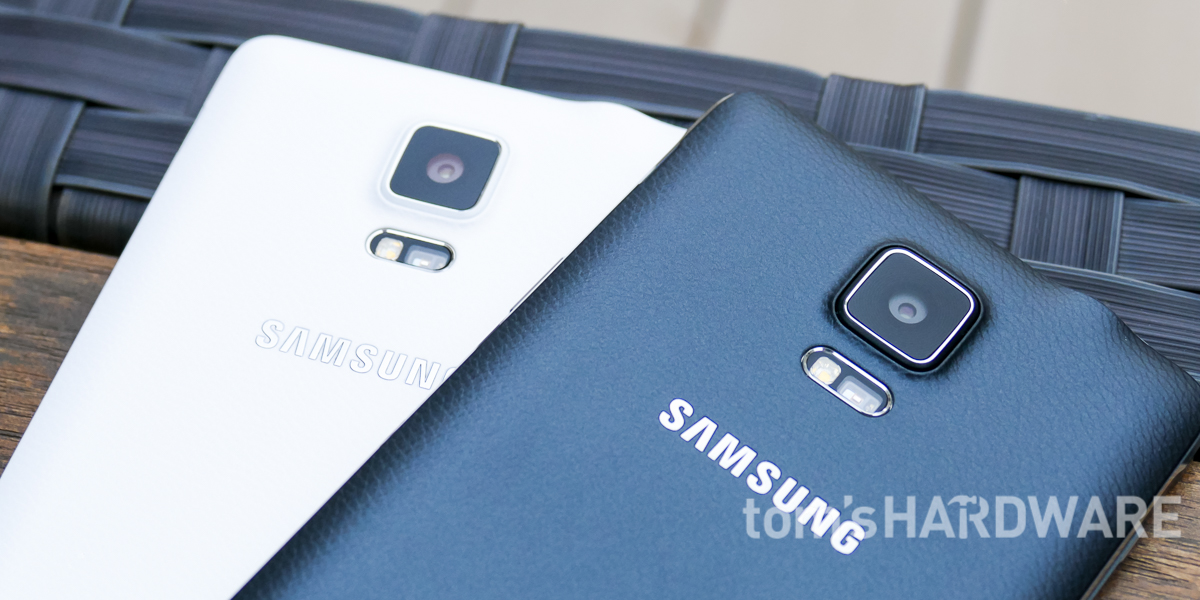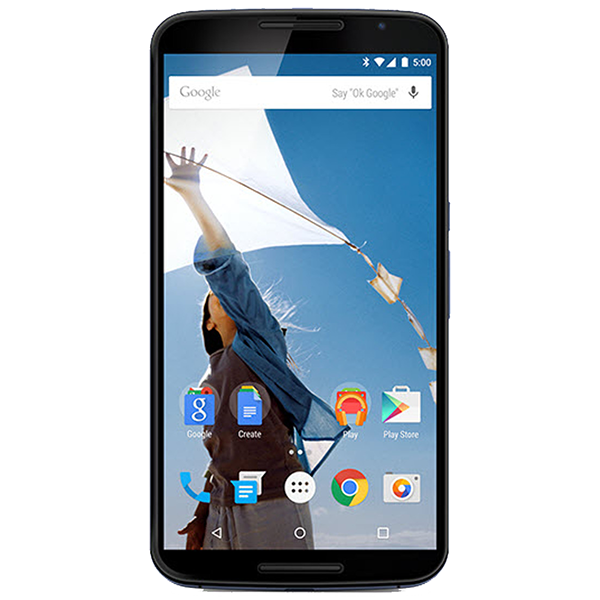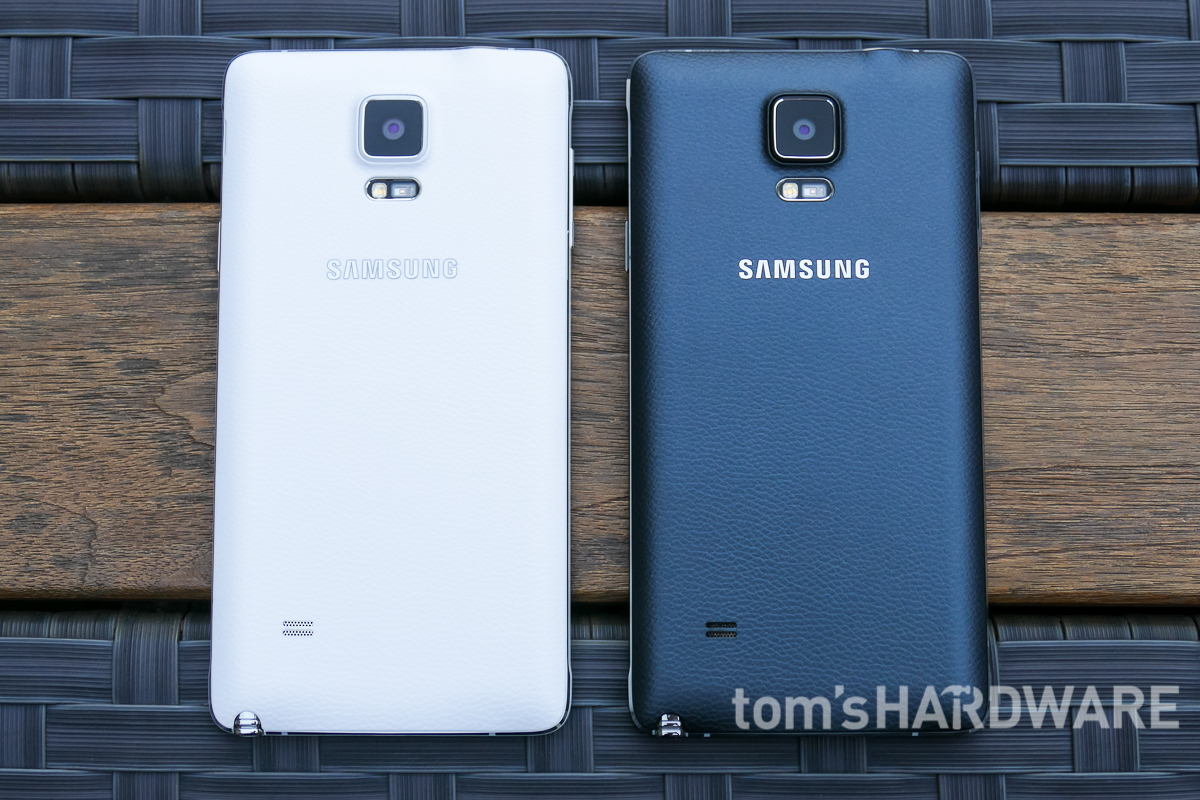Early Verdict
The Galaxy Note 4 successfully carries on the Note tradition, surrounding a big, high quality screen with a solid feeling aluminum frame. The S Pen and Samsung’s software features set it apart from other phones in this size class. Speedy silicon and a large, removable battery keep you productive throughout the day.
Pros
- +
Build quality • Camera • Expandable storage • Internal storage • Removable battery • Screen • SoC • Software features
Cons
- -
External speaker placement • Slow-motion video • Thermal throttling • UI latency and stuttering when scrolling
Why you can trust Tom's Hardware
Introduction And Specifications
Samsung remains the most prolific Android OEM, partly because they aren't afraid to experiment with new device classes, covering everything from Galaxy Gear wearables to the 12” Galaxy Note Pro tablet. While some of these trials miss the mark and leave us scratching our heads, many of its devices are among the most popular in their category. Probably Samsung's most successful gamble is the Galaxy Note line of smartphones.
Samsung's original Galaxy Note, while not the first phablet (remember the Dell Streak?), generated interest in larger phones, and through its utility, won a loyal following. With each generation of the Note series, more people embraced the concept and the Note's popularity grew. While the size of phablets aren't for everyone, the influx of large phones by other manufacturers indicates there’s a growing market for phones blurring the line with tablets.
The most noticeable feature of the Galaxy Note 4 is clearly the size of its screen, which has grown each generation from 5.3- to 5.5- to 5.7-inches in the Galaxy Note 3, a dimension which remains unchanged in the Note 4. Screen resolution, however, continues to climb, up from 1920x1080 in the Note 3 to 2560x1440. Samsung has also improved the quality of what's displayed on the screen by calibrating it with better precision.
The big screen isn't the Note line's only distinguishing feature. The S Pen is what defines the Note brand, and along with Samsung's supporting software, it's a true differentiator from other competing devices and can change the way you use your phone when fully embraced. Sure, you can write notes with it and use it as a pointer, but it can also be used to initiate a phone call, map an address, or markup images and PDFs. Paired with the big screen, the S Pen is a useful navigation aid and helps get real work done.
For the 4th generation Note, Samsung has also improved the design and construction. Like the Galaxy Alpha that preceded it, the Note 4 has a machined aluminum frame that surrounds a magnesium and plastic chassis. This aluminum frame looks great and the magnesium chassis adds rigidity.
Like the Galaxy S5, the Note 4 also uses Synaptics’ Natural ID capacitive fingerprint reader integrated into the home button. It works exactly the same as on the S5, requiring you to swipe a finger across it to authenticate. This method is a little frustrating to use when compared to the iPhone’s Touch ID (and the new sensor in the Galaxy S6) that simply requires you to touch the sensor. The Note 4’s physical size makes the swipe sensor even more challenging to use. At least Samsung has improved the fingerprint reader since it debuted on the S5, making it less fussy about swipe speed and partial and off-angle finger swipes.
The fingerprint scanner can be used to unlock the phone, log into your Samsung account, and gain access to items that have been protected by Samsung’s "Private Mode" feature. You can also use it with a select number of 3rd party apps such as PayPal and LastPass. Being FIDO-compliant, it can also be used to log into websites when using the Samsung browser, but not with Chrome. Business users who use Samsung’s KNOX can also enable two-factor authentication when logging into their work profile using the scanner.
Get Tom's Hardware's best news and in-depth reviews, straight to your inbox.
Another new focus for Samsung with the Galaxy Note 4 is health and fitness. The Note 4 has hardware sensors capable of counting the number of steps you take each day, as well as your heart rate, blood oxygen level, stress level, and even the UV index. These sensors work together with the S Health app, which is fairly comprehensive in its own right, including support for Samsung’s line of wearable fitness products.
Samsung Galaxy Note 4 Tech Specs
It's only taken a few years for the large-screen smartphone category to become rather crowded. Every OEM from Apple to ZTE offers a phone with a 5.5-inch or larger display, creating fierce competition. Fortunately, the Note 4 isn't all about screen area. Its aluminum frame surrounds some very nice hardware. The Snapdragon 805 SoC still offers great performance even though it has been surpassed by the newer Cortex-A57 based Snapdragon 808/810 and Exynos 7420 chips. The 3GB of RAM is a generous amount and still the standard for current flagship phones. There's also a reasonable 32GB of internal storage, which can be expanded with removable SD cards.
Compared to the previous generation Note 3, there's a few big changes. Screen resolution has been increased from HD to QHD for the Note 4, reducing the graininess that can result from using a PenTile pixel structure. The Note 4 also includes an upgraded Snapdragon SoC and new front and rear camera sensors. Overall dimensions are very similar, with the Note 4 being ever so slightly taller and thicker than the Note 3. The aluminum frame increases the Note 4's rigidity, reducing flex and giving it a premium feel, but at the cost of 8g of additional weight.
Cellular
| Model Number | SM-N910A(AT&T) | SM-N910P(Sprint) | SM-N910T(T-Mobile) | SM-N910R(U.S. Cellular) | SM-N910V(Verizon) | SM-N910W8(Bell, Eastlink, MTS, Rogers, SaskTel, Tbaytel, Telus, Videotron, Wind Mobile) |
|---|---|---|---|---|---|---|
| Baseband | Qualcomm MDM9625M | |||||
| RF Transceiver | Qualcomm WTR1625L + WTR1625 | |||||
| RF ICs | Qualcomm QFE1100 (envelope tracker) + RF8117V (RF Micro Devices antenna switch?) | |||||
| LTE | 2/4/5/12/17 | 25/26/41 | 1/2/3/4/5/7/8/12/17 | 2/4/5/12/17 | 4/13 | 1/2/3/4/5/7/8/12/17 |
| GSM | 850/900/1800/1900 MHz | 850/900/1800/1900 MHz | 850/900/1800/1900 MHz | Row 4 - Cell 4 | 850/900/1800/1900 MHz | 850/900/1800/1900 MHz |
| CDMA2000 | Row 5 - Cell 1 | 0/1/10 | Row 5 - Cell 3 | 0/1/14 | 0/1/10 | Row 5 - Cell 6 |
| WCDMA | 1/2/5 | 1/2/5/8 | 1/2/4/5 | Row 6 - Cell 4 | 1/2/5/8 | 1/2/4/5 |
There are 22 different model numbers for the Galaxy Note 4, each supporting different regional or carrier specific frequency bands. Some versions substitute a Samsung Exynos 5433 [ARM Cortex-A57 (4x @ 1.9GHz) + ARM Cortex-A53 (4x @ 1.3GHz), Mali T760MP6 GPU] for the Snapdragon 805 SoC. There's also differences in audio codecs, voice processors, and baseband processors, with some using an Ericsson M7450 and others using Cat 6 basebands such as the Intel XMM7260 and Samsung's M303. To keep things from getting too complicated, the table above focuses on just the North American models.
Qualcomm's MDM9x25M baseband is a third-generation Category 4 LTE modem built on a 28nm HPm process offering 150 Mb/s down and 50 Mb/s up with carrier aggregation. It also supports HSPA+ Release 10 for 84 Mb/s down using dual-carrier HSDPA. The MDM9625M incorporates all major radio modes, including GSM/EDGE, UMTS (WCDMA, TD-SCDMA), LTE (LTE-FDD, LTE-TDD) and CDMA2000.
The Note 4 uses Qualcomm's WTR1625L transceiver paired with another WTR1625, rather than the more common WFR1620 receive-only transceiver, in order to bond two 10MHz channels and reach full Category 4 LTE speeds, a requirement when carriers don't have 20MHz LTE channels.
The RF front-end uses Qualcomm's QFE1100 envelope tracker, which dynamically adjusts voltage to the power amplifiers, wasting less energy and reducing heat generation, but none of the other components in Qualcomm's RF360 suite.
Options
The North American versions of the Note 4 all come with 32GB of onboard storage, and color options are limited to Charcoal Black or Frost White.
As evidenced by the impressive hardware specifications and premium pricing, the Galaxy Note 4 is targeted squarely at the high-end market. For consumers willing to spend top dollar on the ultimate smartphone, the question becomes one of comparative value in regards to other devices in the same category. A question answered by the design of the Galaxy Note 4 and the value added by hardware and software features.
-
ZolaIII All in all nice review but I somehow feel you skipped a litle audio section. Not that I blame you much for it as Qualcomms solution is nothing special & it's far behind WolfsonMicro's WM5110 used on Exunos equipped models. Looks like you still didn't got to the bottom of bus frequency scaling dependencies on this Qualcomms SoC gen. ??Reply -
Vorador2 Replythis came out long ago!
It's a tradition. Everybody reviews phones in the week before or after a phone is released.
Tomshardware is better than that. Fashionably late to the party. -
jafrugh Replythis came out long ago!
It's a tradition. Everybody reviews phones in the week before or after a phone is released.
Tomshardware is better than that. Fashionably late to the party.
Well if you think Toms's Hardware needs to be quicker on the draw for phone reviews, go to this article: http://www.tomshardware.com/news/mobile-editors-wanted,29105.html -
Vlad Rose Replythis came out long ago!
I thought the same thing considering I'm using a Note 4 Edge right now... lol -
alex davies Replythis came out long ago!
The difference between our review and others is that we tested the Note 4 running the Lollipop update, which only came out recently.
We also compare its performance to newer devices such the Galaxy S 6, so you can see how the Note 4's older SoC compares to the latest and greatest. -
MobileEditor ReplyAll in all nice review but I somehow feel you skipped a litle audio section. Not that I blame you much for it as Qualcomms solution is nothing special & it's far behind WolfsonMicro's WM5110 used on Exunos equipped models. Looks like you still didn't got to the bottom of bus frequency scaling dependencies on this Qualcomms SoC gen. ??
I agree with you regarding our audio testing. I'm definitely not happy with it. We need to acquire some testing equipment, but the hardware we found cost $30k!!! Needless to say, we're still using my ears, because they're cheap.
If you, or any of our readers, could point me towards some audio testing equipment that mere mortals can afford, please PM me.
I did not investigate the bus scaling on the Note 4, partly because this review was finished by then and partly because the Note 4 did not exhibit "unusual" behavior. We will be examining this for the GS6.
- Matt H. -
10tacle Nice review and very useful to people like me needing an upgrade after skipping two generations of smart phones. I usually keep mine 3 years, and my Droid Bionic is like running a Core 2 Duo desktop these days. I'm still debating between the Note or Galaxy. Apples are out because 1) I don't like the fact that the battery *cannot* be removed to completely shut the phone off, and 2) no MicroSD slot for memory expansion.Reply
There will come a time when all smart phones from all manufacturers no longer allow SD memory upgrades, and I think that time is coming sooner rather than later. After all, one can go buy a 128GB $100 MicroSD card, but if Apple users want a 128GB phone, they have to shell out another $200 clams from the base 16GB model, and they don't get the extra "free" GB memory to start with after upgrading that came with the Android.
But with that said, there are some people reporting about overheating and battery drain with their Note 4. Battery drain can be a problem with the provider though like a cell tower being down. Plus, the Note 5 is coming in a few months, possibly in July. I'm hoping it still has an SD slot otherwise I'll get the 4 and hope the serious overheating and battery drain reports are a fluke.
